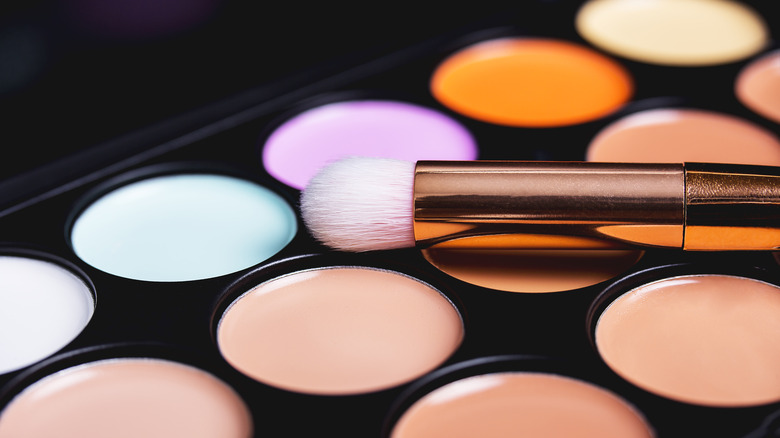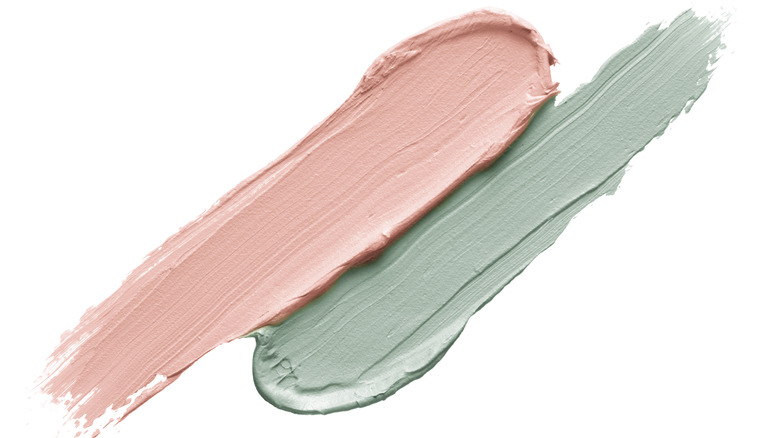You've Been Using Color Corrector The Wrong Way This Whole Time
It's hard to imagine a world without color corrector. The popular makeup technique has saved many of us from looking too tired at work after a late night and hidden a hangover by brightening complexions and minimizing redness. But as it turns out, many of us have been using color corrector the wrong way this whole time.
According to Beyonce's makeup artist Sir John, the first thing you need to focus on when color correcting is knowing exactly what areas of your face you actually need or want to color correct and why. "Your look can go awry very easily if you don't map out where and what you need to color correct," Sir John told Cosmopolitan. The areas differ from person to person, so it's important to take your time and experiment with your face until you find out what works best for you and the skin concerns that you're trying to hide.
It's best to apply color corrector after foundation
The second thing you need to focus on is the color corrector product you use. "Your skin can look too light or your concealer might peek through your foundation if you use the wrong shade," explains Sir John. In other words, you need to select the shade of color corrector carefully as certain colors work better on certain skin tones. As a general rule, green neutralises redness, lavender neutralizes yellowness, peach hides dark circles, and yellow brightens, and as Reader's Digest reminds us, you shouldn't just assume that one color is all you need. You might need different color correctors for different areas of your face.
In terms of application, Sir John advises applying color corrector after foundation. "Apply lightly with your fingertips, and the warmth of your skin will help blend the product with your skin tone," he instructs. The last thing you want is for there to be too much buildup of product or for it to look unnatural, so blending is key.

